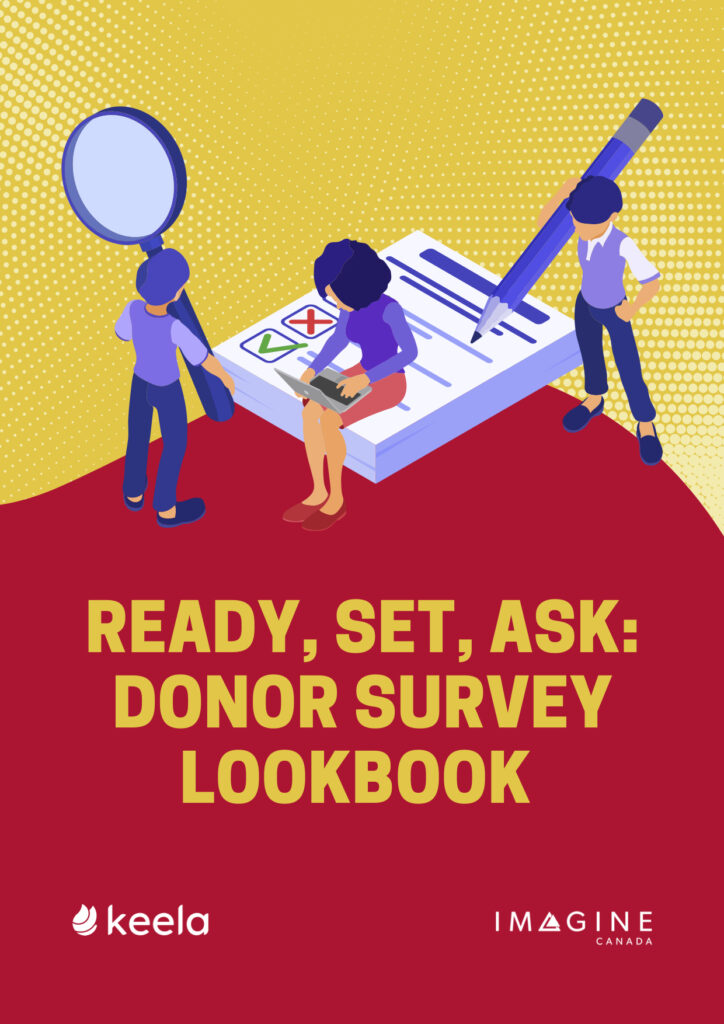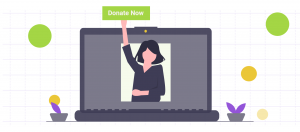Donor Pipeline Management: Fueling Your Nonprofit’s Growth


In the realm of nonprofit success, cultivating a robust donor pipeline is akin to laying a solid foundation for a skyscraper. But what exactly is a Donor Pipeline? It’s the strategic process of identifying, engaging, and stewarding potential donors, ultimately converting them into steadfast supporters. This blog aims to unravel the vital components of this process, shedding light on its pivotal role in sustaining and propelling nonprofit organizations forward.
By delving into the nuanced strategies and best practices, we’ll equip you with the knowledge and tools to not only establish a thriving pipeline but also to nurture enduring relationships with donors. Let’s embark on this journey together, uncovering the keys to sustained growth and impact in the nonprofit sector.
Understanding Your Nonprofit’s Goals and Needs
To effectively manage your donor pipeline, it’s imperative to start by understanding your nonprofit’s unique goals and needs. This foundational step lays the groundwork for a successful fundraising strategy. Begin by identifying your funding needs with precision. What are the specific projects, programs, or initiatives that require financial support? This clarity ensures that every outreach effort is purposeful and aligned with your organization’s mission.
Next, define your target donor audience. Who are the individuals, foundations, or corporations that resonate with your cause? Pinpointing this demographic enables you to tailor your messaging and engagement strategies, maximizing their impact.
Crucially, align your goals with your mission and programs. A cohesive approach ensures that every fundraising initiative not only secures the necessary resources but also advances your core mission. It creates a narrative that resonates deeply with potential donors, solidifying their commitment to your cause. By harmonizing these elements, you set the stage for a donor pipeline that not only sustains but propels your nonprofit’s growth.
What are the Stages of the Donor Pipeline?
Now that you have a solid grasp of your nonprofit’s goals and needs, let’s dive into the stages of the Donor Pipeline. This sequential process is the backbone of effective donor management, guiding potential supporters from initial interest to dedicated advocacy.
Prospect Stage
The journey commences at the Prospect Stage. Here, you identify individuals or entities with a potential interest in your cause. These prospective donors may have shown preliminary signs of engagement, but they have yet to make a substantial commitment. It’s essential to conduct thorough research, understand their philanthropic inclinations and preferences. This knowledge empowers you to tailor your outreach efforts, ensuring they align with their values and interests.
Cultivation Stage
As prospects show increasing interest, they progress into the Cultivation Stage. This phase is all about building relationships. Engage them with compelling stories, updates on your initiatives, and opportunities for involvement. Personalized communication is key, allowing them to feel a genuine connection to your cause. This stage requires patience and strategic nurturing, as you’re sowing the seeds for a long-lasting partnership.
Solicitation Stage
Moving forward, the Solicitation Stage is where the ask is made. After establishing a strong foundation in the previous stages, it’s time to present a clear and compelling case for support. Be specific about how their contribution will directly impact your mission. Whether it’s a one-time donation or a larger commitment, make sure the ask is aligned with their capacity and interests.
Stewardship Stage
Once a donation is made, it’s crucial to transition into the Stewardship Stage. This phase involves showing gratitude, transparency, and the impact of their contribution. Regular updates, personalized acknowledgments, and reports on the progress of your projects reinforce their trust and demonstrate the tangible results of their support. Stewardship solidifies the relationship, setting the stage for continued engagement and future contributions.


Build Your Nonprofit’s Donor Stewardship Plan
Stewardship activities are touchpoints for nurturing your donors and helping to increase your donor retention rate. With this FREE template, you can map out your donor stewardship plan.
By understanding and effectively navigating these stages, you’ll be well-equipped to guide potential new donors through the pipeline, transforming them into dedicated advocates for your nonprofit’s mission.
Donor Prospecting and Identification
To propel your nonprofit’s growth, effective donor prospecting is paramount. This phase involves a strategic approach to identifying and cultivating potential supporters.
Researching Potential Donors: Begin by delving into comprehensive research on prospective donors. Scrutinize their donation history, affiliations, and philanthropic interests. This knowledge empowers you to tailor your outreach efforts, ensuring they resonate with their specific passions.
Segmenting Your Donor Base: Divide your donor base into segments based on common characteristics or giving patterns. This segmentation enables you to craft targeted messages and engagement strategies. Whether it’s major donors, regular contributors, or prospective donors, this approach ensures that every outreach effort is finely tuned.


Get Started on Segmenting Your Donors with a FREE Template!
With this donor segmentation template, you can define segmentation criteria, group donors, assign scores to each donor segment, and more!
Building Donor Personas: Constructing donor personas is akin to creating a roadmap for engagement. These fictional representations embody your ideal supporters, encompassing their motivations, preferences, and potential for major gifts. By visualizing and understanding these personas, you can craft compelling messages that strike a chord with each segment.
Identifying High-Potential Donors: Among your prospect pool, there are likely high-potential donors with the capacity for major gifts. These individuals have demonstrated a keen interest or substantial capacity to contribute significantly. Identifying and prioritizing them ensures that your efforts are focused on those most likely to become steadfast supporters.
By mastering the art of donor prospecting and identification, you’re setting the stage for meaningful and impactful connections that will fuel your nonprofit’s growth.
Cultivation and Engagement Strategies
With potential donors identified, it’s time to nurture those connections and deepen their engagement with your cause. This phase is where the magic happens, transforming interest into enduring support.
Creating Compelling Storytelling: Crafting compelling narratives is the cornerstone of effective cultivation. Share stories that vividly illustrate the impact of your nonprofit’s work. Showcasing real-life examples of how donations make a difference not only resonates emotionally but also provides tangible proof of your organization’s effectiveness.
Developing Personalized Communication: Forge genuine connections through personalized communication. Tailor your messages to align with each donor’s interests, preferences, and giving history. Whether through handwritten notes, targeted emails, or exclusive updates, personalized outreach demonstrates that you value and understand their unique contributions.
Leveraging Technology for Donor Engagement: Embrace technology as a powerful tool for donor engagement. Utilize CRM systems and nonprofit software to track interactions and preferences, ensuring that every touchpoint is meaningful and timely. Leverage social media platforms to share updates, engage in conversations, and showcase the impact of contributions in real-time.
Hosting Engaging Events and Initiatives: Events and initiatives offer invaluable opportunities for face-to-face interactions and deeper engagement. Whether virtual or in-person, these gatherings create a sense of community among donors and provide platforms for them to connect with your mission on a personal level.
By deploying these cultivation and engagement strategies, you’re nurturing relationships that will not only sustain your nonprofit but also propel it to new heights of impact and growth.
Donation Solicitation and Conversion
Now that you’ve cultivated strong connections, it’s time to turn that goodwill into tangible support. This phase is all about making the ask and ensuring a seamless donation process.
Crafting Effective Donation Appeals: Compose compelling and clear donation appeals that resonate with your donors. Highlight the impact their contribution will make, and be transparent about how their support furthers your mission.
Setting Up Donation Mechanisms: Facilitate the giving process by providing various convenient donation options. Whether it’s through your website, mobile app, or in-person methods, make sure donors can easily contribute.
Optimizing Online Donation Platforms: Maximize your online presence with user-friendly donation platforms. A seamless online experience encourages trust and simplifies the process for donors.
Encouraging Recurring Donations: Encourage sustained support by promoting recurring donations. This creates a steady and predictable revenue stream, allowing you to plan and execute your programs more effectively.
With these strategies in place, you’re poised to convert interest into impactful contributions.
Donor Stewardship and Retention
Ensuring ongoing support means valuing and nurturing your donors. This phase focuses on deepening relationships and showing appreciation for their dedication.
Acknowledging and Thanking Donors: Express gratitude promptly and genuinely. Personalized thank-you letters or messages demonstrate that you recognize and value their contributions, strengthening the donor-nonprofit bond.
Reporting on Impact: Transparency is key. Regularly share updates on how donations are making a difference. Detailed impact reports give donors confidence that their contributions are creating tangible results.
Building Long-term Relationships: Invest in long-term connections by staying engaged beyond just solicitations. Show genuine interest in their interests, concerns, and feedback. This builds trust and reinforces their commitment to your cause.
Measuring Donor Satisfaction: Gauge satisfaction levels through surveys or direct feedback. Understanding donor sentiments helps tailor future interactions and ensures a positive donor experience.


Get Access to FREE Donor Survey Templates!
This lookbook contains three common surveys to send to your donors including the questions, answers, and suggested formatting. Use this lookbook to start gathering important information about your donors.
By prioritizing stewardship and retention, you’re laying the foundation for a community of committed advocates who will champion your cause for years to come.
Managing the Donor Pipeline
Effectively overseeing your donor pipeline is akin to steering a ship towards a brighter future. It involves strategic systems and keen insights to ensure sustained growth.
Implementing Donor Management Systems: Leverage advanced donor management systems, like Keela, to streamline operations. These tools help organize donor information, track interactions, and automate communication, ensuring no valuable connection falls through the cracks.
Tracking and Analyzing Donor Data: Monitor donor engagement and giving patterns closely. Analyzing this data unveils valuable insights into their preferences and behaviors, enabling you to fine-tune your outreach and engagement strategies.
Adjusting Strategies Based on Donor Behavior: Stay agile and responsive. Tailor your strategies based on donor behavior and feedback. This adaptability ensures that your efforts remain aligned with their evolving interests and preferences.
With robust management practices in place, you’ll navigate your donor or major donor pipeline with precision, steering your nonprofit towards sustained growth and impact.
Overcoming Common Challenges
In the dynamic landscape of nonprofit fundraising, challenges are inevitable. It’s crucial to address these hurdles with resilience and strategic approaches.
Donor Attrition: Combat donor attrition by focusing on retention strategies. Acknowledge and appreciate their contributions consistently, and keep them engaged with compelling updates on your initiatives.
Donor Fatigue: Mitigate donor fatigue by diversifying your outreach efforts. Implement creative campaigns, engage donors in meaningful ways, and offer options for involvement beyond monetary contributions.
Handling Donor Complaints and Concerns: Approach complaints and concerns with empathy and prompt resolution. Effective communication and transparency rebuild trust and demonstrate your commitment to donor satisfaction.
By proactively tackling these challenges, you’ll fortify your donor pipeline, ensuring sustained growth and impact for your nonprofit.
Nurture Strong and Enduring Donor Relationships with the Help of Keela!
See how Keela’s tools can help your organization to identify, engage, steward, and convert prospective donors into steadfast supporters.
Conclusion
In harnessing the power of your donor pipeline, you’ve unlocked a transformative force for your nonprofit organization. Remember, it’s not just about converting prospective donors; it’s about nurturing existing donors, creating a community committed to donating money for your cause.
To all nonprofit leaders and fundraisers, now is your time to take action. Start building or enhancing your donor pipeline today, and watch as your regular donors become a force of change, propelling your organization towards even greater heights of impact and success.
Schedule a call with a Keela team member to learn how Keela’s Donor Pipeline Management tool can help you raise more!


About the author:
Stephanie Wallace
Marketing Specialist, Keela
For as long as she can remember, Stephanie has been involved in the nonprofit industry. This passion for nonprofit fundraising and helping her community led her to study Human Rights and Social Justice. Stephanie continued her studies where she completed a Post Graduate Certification in Digital and Content Marketing. This is when she found she could combine both her love of marketing and nonprofit fundraising.





